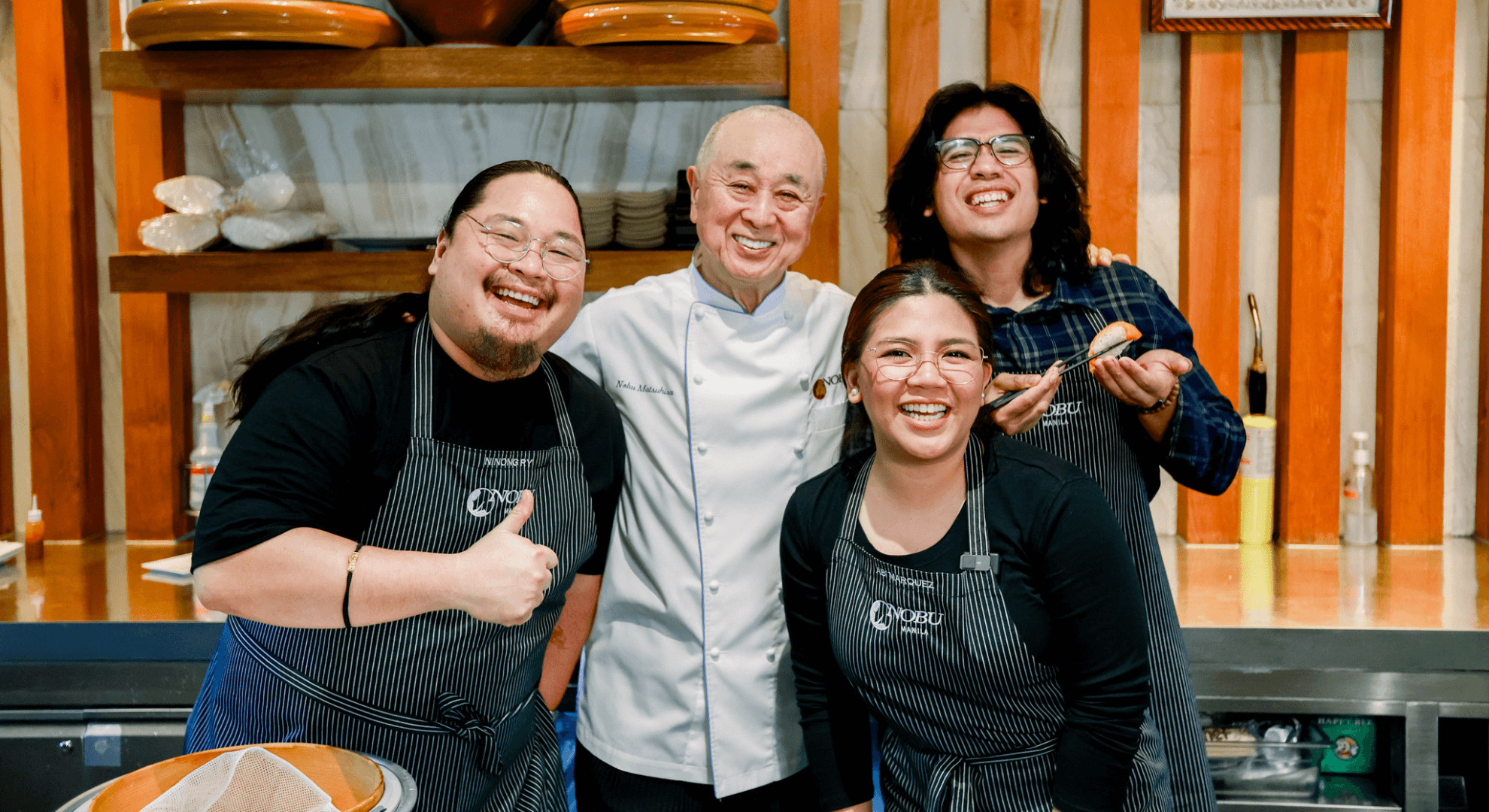Last Sunday, our friend Claude Tayag did a degustation lunch at the Rockwell Club function room, with tickets sold to club members.
We’ve always been a great fan of Tayag’s cooking; unfortunately we’re too lazy to make the trip to Bale Dutung, his home-based dining place in Pampanga, as often as we should.
So the news that he would be in Makati doing his latest creations was too good to miss.
It was the now-familiar format known as degustation (or degustacíon, since Spanish was the theme for the day), and we worked our way through a very interesting menu of small plates, culminating in some the best interpretations of adobo I have ever tried—marinated in vinegar and spices, simmered in oil over low heat as one would a duck confit, then finally caramelized until crisp on the outside.
Service was by the Rockwell Club waitstaff, who must have been excited to be doing something outside their usual poolside and café duties. We chatted with them afterwards, and they seemed to agree that the food was quite extraordinary.
One said, “But it took such a long time!” He had a point, as the sun was beginning to set.
But such is the nature of degustation meals, which is why you need to have great faith in and be willing to give not just money, but also time, to the chef.
Heston Blumenthal’s Fat Duck, for instance, has a single seating that takes about four hours, finishing around midnight.
Dictatorial
Ironically, the whole point of a degustation used to be to showcase a chef’s dishes you weren’t familiar with, the way you would buy, say, a CD of The Very Best of Sting & The Police before diving into the depths of the back catalogue.
The latter-day style of degustation was influenced by the dictatorial hand of Ferran Adrià and by the Japanese omakase, and are more tour de force than compilations. (The analogy would be concept albums like The Who’s “Tommy” or Pink Floyd’s “Dark Side of the Moon,” which demand patience and perseverance on the part of the listener).
Because of Madrid Fusión, everyone seems to be offering tasting menus these days, especially restaurants that take themselves seriously. But not all of them are worth your time.
My wife and I once walked into one where each dish was prefigured by a dissertation-length lecture on its origins and history—who raised the chicken we were eating, what her name was, and who her friends had been in the barnyard.
Another instance provoked a rare complaint on my part that there was simply too much food: a degustation is about tasting portions, not eating 10 complete meals in succession.
The Cantonese, a very efficient sort of people, solved this problem early on by having the variety that one got at a degustation—but served with the speed of a Nathan Road camera salesman out to get your money. We’re talking, of course, about the ritual of dim sum, which can happen as quickly or as leisurely as you wish.
The ritual from which it originated is yum cha, which took place between breakfast and lunch and could fulfill the needs for both.
The tea itself, or cha, is essential, and is the common thread to the variety of steamed, fried or baked dishes on the menu or trolley. You can share them or not.
In Guangdong and Hong Kong, it served more than one social function: Men would come with a bird in a cage and a stack of newspapers and hold court, meeting with business partners and discussing the politics of the day.
One of the best-kept secrets in town is the Sunday lunch all-you-can-eat dim sum at Red Lantern in Solaire, which is priced at the Chinese lucky number of P888. It’s probably the least expensive meal you can eat at Solaire, a place for high rollers (no, not the kind you put on your hair).
Although, at the moment, my choice of best dim sum in town is Lung Hin at Marco Polo—with its extravagant gold leaf-coated dumplings and air-flown ingredients—Red Lantern is a good find.
No scrimping
Surprisingly, it doesn’t scrimp on ingredients or variety—the traditional meat or shrimp parcels, Shanghai pork buns, stuffed rice sticks, as well as more innovations such as fish “kataifi” roll (thin shreds like breakfast cereal in Middle Eastern pastries).
We sat back, drank Hangzhou dragon well tea, and discussed politics (though without birdcages).
Some friends, who arrived earlier, left; other friends joined later in the conversation, ordering their small plates of goodness without disrupting the flow.
Dim sum, rather than tapas, has always been our model for small-plate dining and leisure eating. It’s the perfect antidote to too much degustation.
We used to attend symposia and lectures on food studies as part of course requirements, and was always struck by how mirthless and po-faced these seminars could be.
We’re sure Madrid Fusión will not suffer from lack of food, but in its desire to be taken seriously, hopefully no one takes it too seriously and suffer from lack of fun.
Relax, it’s only food.













































